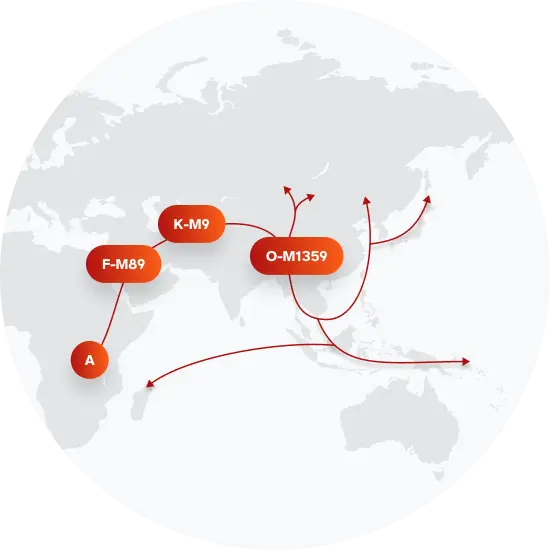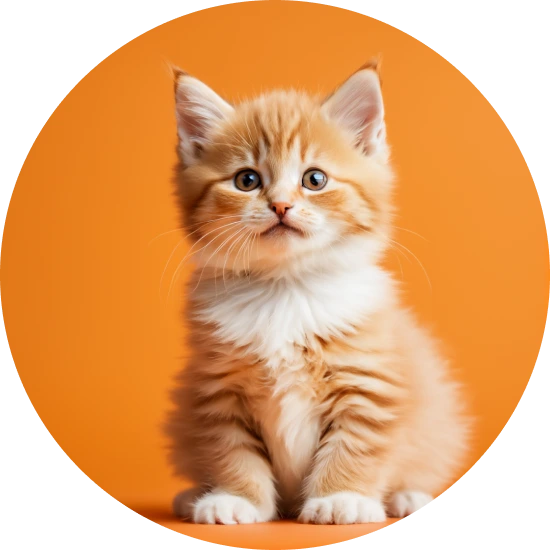Explore the Family Name Ni
How common is the last name Ni in the United States?
Based on the Decennial U.S. Census data, the surname Ni has seen a significant rise in popularity between 2000 and 2010. In 2000, it was ranked 11,859th in terms of prevalence, but by 2010, it had climbed to the 7,217th position—a jump of approximately 39.14 percent. The count of individuals carrying the Ni surname also increased dramatically during this period, from 2,418 to 4,624, marking an upsurge of 91.23 percent. Consequently, the proportion of people with the Ni surname per 100,000 also saw growth from 0.9 to 1.57—an increase of about 74.44 percent.
| 2000 | 2010 | Change | |
|---|---|---|---|
| Rank | #11,859 | #7,217 | 39.14% |
| Count | 2,418 | 4,624 | 91.23% |
| Proportion per 100k | 0.9 | 1.57 | 74.44% |
Race and Ethnicity of people with the last name Ni
In terms of ethnicity, the Decennial U.S. Census data reveals that the majority of those bearing the surname Ni identify as Asian/Pacific Islander, comprising 94.67 percent in 2000 and slightly increasing to 94.90 percent in 2010. The data for those identifying as two or more races and White showed a slight decrease over the decade, going from 1.65 percent to 1.41 percent and 2.27 percent to 1.92 percent respectively. Meanwhile, there was a modest increase in the proportion of those identifying as Hispanic, moving from 0.91 percent in 2000 to 1.15 percent in 2010. No changes were observed in the proportions of those identifying as Black or American Indian and Alaskan Native as these remained at zero for both years.
| 2000 | 2010 | Change | |
|---|---|---|---|
| Asian/Pacific Islander | 94.67% | 94.9% | 0.24% |
| White | 2.27% | 1.92% | -15.42% |
| Two or More Races | 1.65% | 1.41% | -14.55% |
| Hispanic | 0.91% | 1.15% | 26.37% |
| Black | 0% | 0% | 0% |
| American Indian and Alaskan Native | 0% | 0% | 0% |
Ni ancestry composition
23andMe computes an ancestry breakdown for each customer. People may have ancestry from just one population or they may have ancestry from several populations. The most commonly-observed ancestry found in people with the surname Ni is Chinese, which comprises 88.7% of all ancestry found in people with the surname. The next two most common ancestries are Korean (3.5%) and French & German (1.1%). Additional ancestries include Ashkenazi Jewish, Eastern European, Manchurian & Mongolian, Filipino & Austronesian, and Japanese.
Ready to learn more about your ancestry? Get the most comprehensive ancestry breakdown on the market by taking our DNA test. Shop 23andMe
| ANCESTRY BREAKDOWN | COMPOSITION |
|---|---|
| Chinese | 88.7% |
| Korean | 3.5% |
| French & German | 1.1% |
| Other | 6.7% |

Possible origins of the surname Ni
Your DNA provides clues about where your recent ancestors may have lived. Having many distant relatives in the same location suggests that you may all share common ancestry there. Locations with many distant relatives can also be places where people have migrated recently, such as large cities. If a large number of individuals who share your surname have distant relatives in a specific area, it could indicate a connection between your surname and that location, stemming from either recent ancestral ties or migration.
Based on 23andMe data, people with last name Ni have recent ancestry locations in China and Taiwan.
| RECENT ANCESTRY Location | Percentage |
|---|---|
| Zhejiang, China | 28.90% |
| Jiangsu, China | 28.10% |
| Taipei, Taiwan | 28.10% |
| Shandong, China | 28.10% |
| Guangdong, China | 28.10% |
What Ni haplogroups can tell you
Haplogroups are genetic population groups that share a common ancestor on either your paternal or maternal line. These paternal and maternal haplogroups shed light on your genetic ancestry and help tell the story of your family.
The top paternal haplogroup of people with the surname Ni is O-CTS2498, which is predominantly found among people with East Asian & Indigenous American ancestry. Haplogroup O-CTS2498 is descended from haplogroup O-M1359. Other common haplogroups include O-F11 and O-F8, which are predominantly found among people with East Asian & Indigenous American and East Asian & Indigenous American ancestry. Other surnames with similar common haplogroups are: Fang, Qian, Hsu, Gu, Ye, Hung, Hua, Bao, Yeh, Tong.
The most common maternal haplogroups of people with Ni surname are: R, D4, M7b. These most commonly trace back to individuals of East Asian & Indigenous American and European ancestry.
 Paternal Haplogroup Origins O-M1359
Paternal Haplogroup Origins O-M1359
Your paternal lineage may be linked to the Han Chinese
Haplogroup O1a is a branch of O-M119, also called O1a. O-M119 and its branches are present in both northern and southern Han Chinese men at low to moderate frequencies, but are most common among the Jiangsu, Shanghai, and Zhejiang southern Han groups. The Han people, who all share the same language and similar cultural practices, are the largest ethnic group in the world, with about 1.2 billion people. Historical evidence shows that Han people are descendants of the ancient Huaxia tribes that come from northern China, and Han language and culture only expanded into southern China in the last 2,000 years. The spread of Han people and culture from northern to southern China was likely driven by warfare and famine in the north. Members of O-M119 belong to a group that has helped to shape the culture of the world's largest ethnic group.
Your maternal lineage may be linked to many people of Europe and Asia
Most of Europe's most common haplogroups, including H, J, T, V and U, are offshoots of R. Some, like U, were involved in some of the earliest migrations to Europe, while others spread from the Middle East with the dawn of agriculture. These groups spread east as well, reaching Central Asia and India first with early farmers and then with Iron Age migrants. In East Asia, R gave rise to the dominant haplogroups F and B. Members of just one branch of B, B2, migrated from Siberia to the Americas after the peak of the Ice Age 18,000 years ago, where their descendants are found today. However, no other branches of R have been found in the indigenous people of North and South America.

What do people with the surname Ni have in common?
Spoiler alert: it's complicated. People with the same last name are usually no more genetically similar than a randomly sampled group of people from the same population. That said, people with the same surname are more likely to have similar ancestries than randomly sampled individuals. The reason is the tendency of people with similar cultural or geographical backgrounds to preferentially mate with one another. That's why people who share a surname may be more likely to share traits and tendencies in common than people within the general population. Check out the percentages below to see the prevalences of tastes, habits, and traits of people with your surname compared with prevalences among 23andMe users.
Preferences
Traits

Cheek Dimples
Small indentations that appear on the cheeks when a person smiles.
"Ni" Surname 48.3%
23andMe Users 37.6%
Habits
Wellness

Cat Allergy
An allergic reaction to cats, characterized by symptoms such as sneezing, itching, and difficulty breathing.
"Ni" Surname 50.0%
23andMe Users 36.7%
Are health conditions linked to the last name Ni?
The short answer is that, if there is an association between surname and health, it's usually more about your ancestry than your name. Individuals with a given surname are no more genetically similar than the general population but often have similar ancestries. The populations of people associated with those shared ancestries often have sets of genetic variations, also known as alleles, in common. Some of those alleles are associated with a greater likelihood of developing certain diseases.
Disease variant frequency by ancestry
Disease allele frequencies in populations associated with the surname Ni are shown below. Important Note: not everyone with a disease allele will develop these health condition






